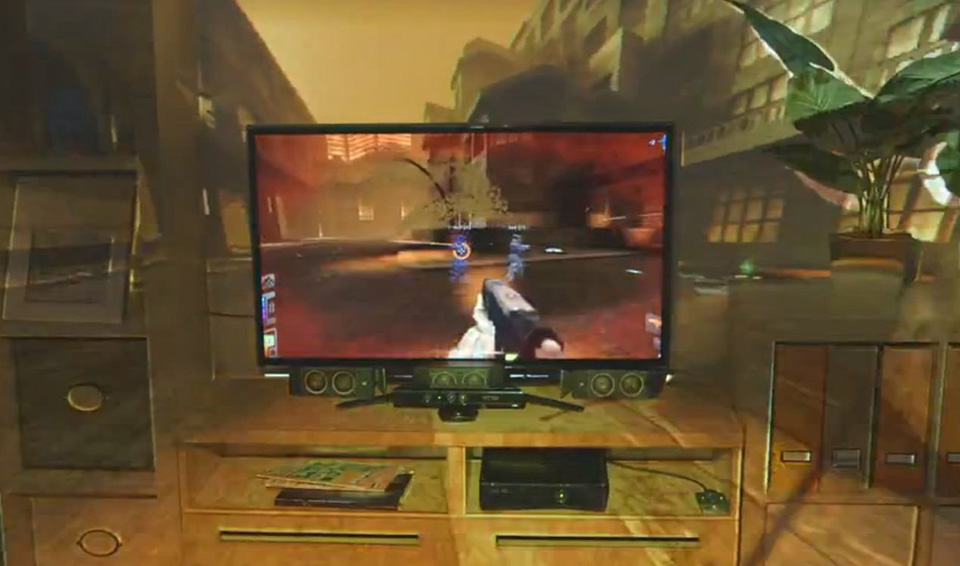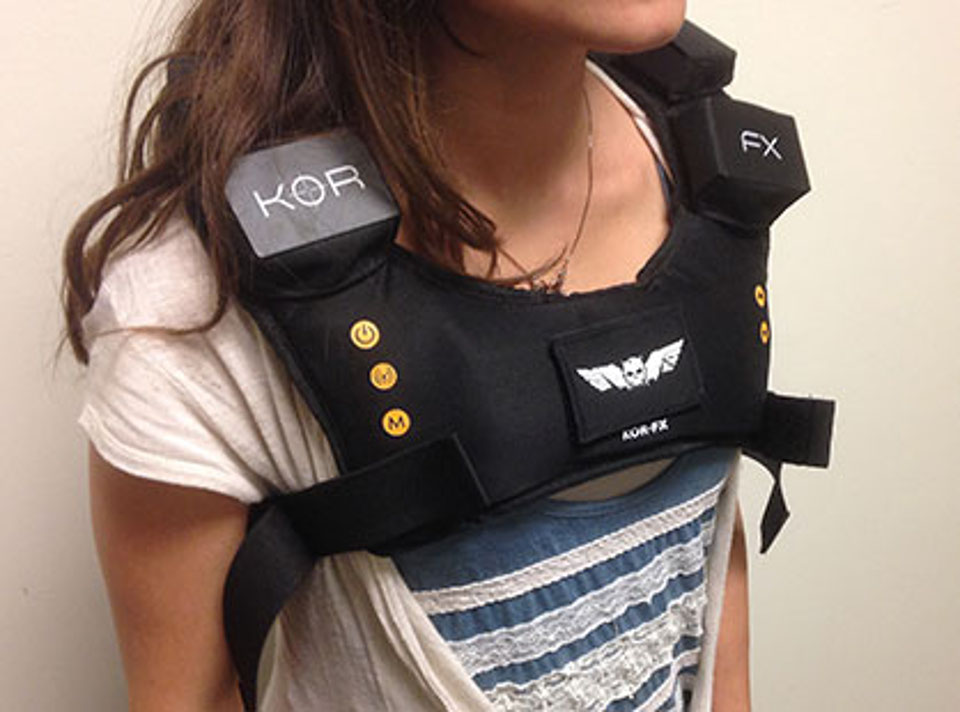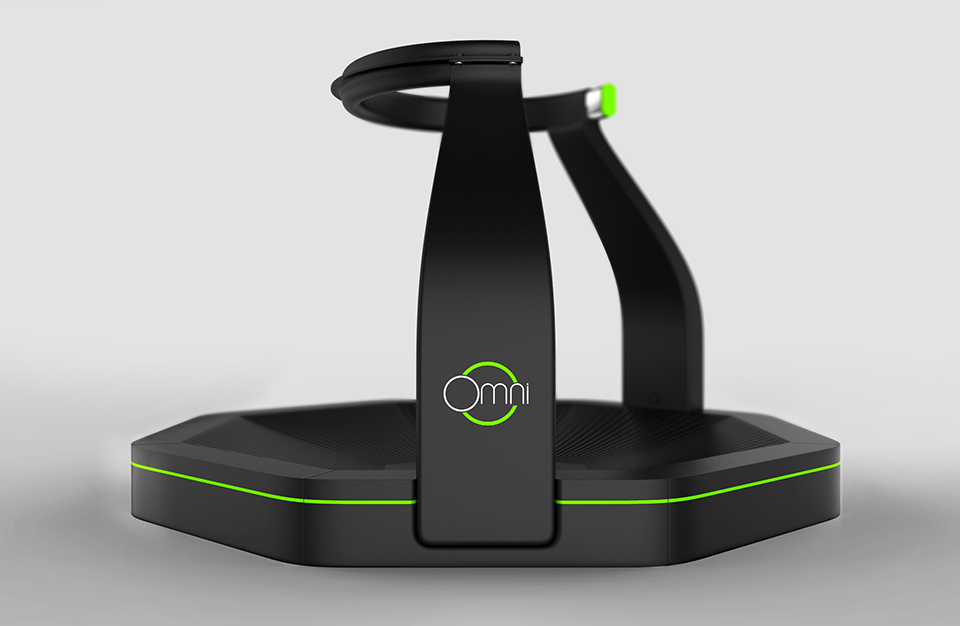
A far cry from our eight-bit history, the future gaming technology of the next generation is technologically profound. In just a few short decades, we’ve gone from arcade cabinets to in-home consoles, eight-bit graphics to hyper-realism; chiptunes to orchestral scores and a world of advanced AI. In short, the video games of today are a world apart from the games of yesterday. These past two years have been a renaissance of sorts for gaming; with virtual reality on the verge of coming into its own. Here are just a few promising prototypes of future gaming technology that are set to change the way we play.
The Virtuix Omni Treadmill
View in gallery
Throughout its history, gaming has been a sedentary activity. Unlike the past, the virtual worlds of tomorrow might be explored on foot. The Virtuix Omni is an omni-directional treadmill that brings something completely unprecedented to the gaming world – natural movement. Not only that, it nips the fitness problem in the bud – unless you’re running, your character won’t be. Awesome, right? Now you can kill two birds with one stone – exercise while you game.
Virtuix Omni Virtual Reality Treadmill | Gallery
View in gallery View in gallery
View in gallery View in gallery
View in gallery
The Oculus Rift VR
View in gallery
The most promising virtual reality peripheral in gaming’s history is also its most well-known, the Oculus Rift. Developed by Oculus VR’s resident wonderkid Palmer Luckey, the Rift is an incredibly promising virtual reality headset which continues to work closely with the development community. Now that Facebook owns the platform, it’s got the potential to become one of the best gaming peripherals on the market. Having it used for social media on the side seems like a small price to pay, doesn’t it? Combined with the Virtuix Omni, this could be the next best thing to having your very own holodeck (speaking of which…keep reading. Someone’s working on one and it looks incredible). Version 2 of the Oculus VR dev kit is in production now, allowing the video game creatives of today to forge the virtual worlds of tomorrow in Oculus style.
The Oculus Rift VR Headset | Gallery
View in gallery View in gallery
View in gallery View in gallery
View in gallery
Kor-FX VR Gaming Vest
View in gallery
Even with all the other devices on the list, full immersion is still sort of out of reach. That’s where the KOR-FX vest comes in. I’ve written about this product before, and it’s definitely fascinating enough to make it onto this list. Assuming it actually works as intended, the vest’s firmware converts audio input into directional haptic feedback. Wear it, and you’ll be able to feel every explosion, every gunshot, every tuck-and-roll. Even better, the technology behind KOR-FX is completely plug-and-play, meaning you can use it with pretty much any device on the market.
KOR FX VR Gaming Vest | Gallery
View in gallery View in gallery
View in gallery View in gallery
View in gallery
The Leapmotion Controller
View in gallery
One of the biggest problems about traditional video game controllers is that they’re kind of…inorganic. That’s the idea behind technologies like Microsoft’s Kinect – they remove the middleman, and allow for total gesture control. The Leapmotion controller is one such peripheral, designed for both Mac and PC. It’s…actually really impressive how it works, allowing players to connect with their games in a more intimate fashion than ever before. Although this tiny device doesn’t work with every single game you’ll find, it’s great for titles like Dropchord or Blue Estate. Give it a try – maybe it’s not a virtual reality device, but it’s pretty cool just the same.
Leapmotion Controller | Gallery
View in gallery View in gallery
View in gallery View in gallery
View in gallery
Sony’s Project Morpheus
View in gallery
At this year’s Game Development Conference, Sony shocked the world with the unveiling of its own virtual reality headset, more than three years in the making. Project Morpheus was revealed to be the reason behind the majority of the more confusing design choices with the PlayStation 4. Although it looks to be a PlayStation 4 exclusive, it could be one of the few headsets that can actually give Oculus VR a run for its money. Once developers start creating content for Morpheus, this writer might just have to purchase a PS4.
Microsoft’s Illumiroom Home Visual Environment
While the Illumiroom is still in a prototype phase, that doesn’t change the fact that if Microsoft somehow makes this gadget workable, they could completely change console gaming. The proof-of-concept system – designed by Microsoft Research – augments the room around a TV screen, thoroughly blurring the lines between on-screen content and reality. Illumiroom uses Microsoft’s Kinect in conjunction with a camera and projector system, adapting the images it displays to the shape of the room, and detecting the location of the viewers to give the appearance of motion. It can extend the view to a point where the player feels like they’re no longer in their living room, but inside the game.
Now…understandably, this system has yet to reach production for a number of reasons, not the least of which is that it’s not exactly viable to configure for every single living room arrangement in the world. Still, if Microsoft could get it working, that’s incredible.
Microsoft Illumiroom | Gallery
View in gallery View in gallery
View in gallery View in gallery
View in gallery
Future Gaming Technology Fusion: The Survios Holodeck
View in gallery
In case you hadn’t already guessed, I’ve saved the best for last. Project Survios is the culmination of pretty much every other item on this list. It all began with Project Holodeck, back in March 2012. At a virtual reality conference in Orange County, California; Nathan Burba, James Iliff, and Palmer Luckey decided to team together to make something which has previously only existed in the domain of science fiction. Combining the Oculus Rift with Sixense motion control, Survios allows gamers to dive into their games like never before. What’s more, it’s safe to assume that Facebook’s Oculus VR acquisition will include some trickle down investment to this project. It is the most promising virtual reality system to date, and one that stands to revolutionize the next generation and beyond with direct and competitive products. It’s making waves now, and those virtual ripples should be inspiring the big studios to get involved.
The Survios Holodeck | Gallery
View in gallery View in gallery
View in gallery View in gallery
View in gallery
Traditional control schemes for games are on the way out. In the several decades that gaming’s been around, they’ve gotten more than a little stale. The natural next step for the games industry, then, is clear: we need to evolve. The tech on this list represents just a few examples of the ways in which we’re doing so. Once it actually starts releasing to consumers ,well…gaming’s going to change forever.
And that, my friends, is perfectly alright.

















